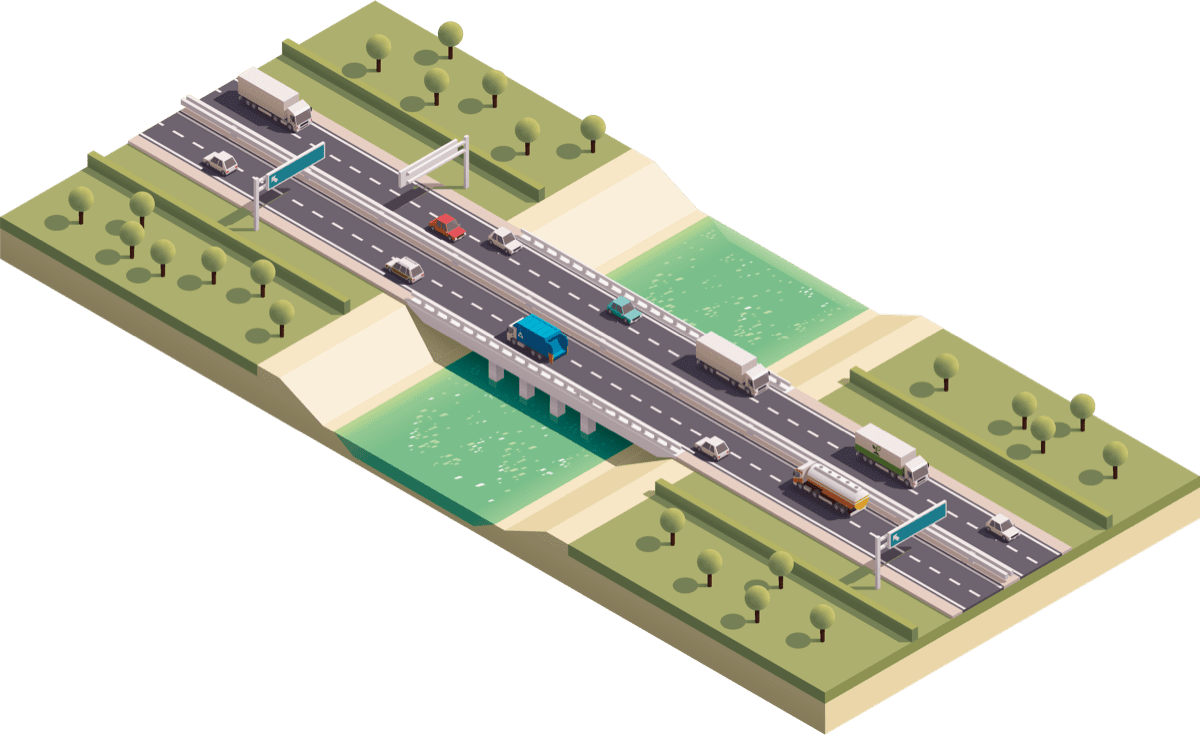Driven by safety
Connecting the Central Belt and the West of Scotland, the A82/A85 between Tyndrum and Lix Toll is a vital artery for communities. On average, over 6,000 vehicles use this section of the network every day, carrying a mix of commuter and freight vehicles and also tourist traffic during the summer months.

Performance before average speed camera deployment
Before average speed cameras were deployed on the A82/A85 between Tyndrum and Lix Toll the route had a persistent collision and speeding profile.
During the 3 year period 2014-2016 there were 21 recorded injury collisions on the route between Tyndrum and Lix Toll. That was despite the mobile enforcement strategy in place, which was found to be effective in influencing driver behaviour only during the hours of deployment. Therefore, it was clear that more could be done to improve driver behaviour.

Driver behaviour before average speed camera deployment
Analysis of driver behaviour on the A82/A85 between Tyndrum and Lix Toll reveals:
- 1 fatal and 11 serious collisions over the 3 year period 2014-2016
- One in three vehicles speeding (above 60mph)
- Regular instances of vehicles exceeding the speed limit by 15mph or more

Average speed cameras
Average speed cameras have been introduced on the A82/A85 between Tyndrum and Lix Toll, replacing the mobile enforcement strategy previously in place.
We know the significant benefits that average speed cameras can deliver from experience elsewhere on the trunk road network in Scotland, including the A77, A9 and A90. We expect the system between Tyndrum and Lix Toll to realise a range of improvements, including:
- Fewer people being killed or seriously injured. Average speed cameras are about enhancing road safety, and these systems have been a proven success. On similar rural single carriageway roads there has been a 60% reduction in the number of killed or seriously injured casualties since average speed cameras were introduced;
- Reduced incident frequency and impact, improved journey time reliability; and
- Improved driver behaviour and speed limit compliance. Average speed cameras are proven to significantly improve the number of vehicles complying with the speed limit.

Myth buster and FAQs
-
It’s all a big money making scheme
We don’t want your money: Average speed cameras on the A82/A85 are expected to result in better speed limit compliance.
-
Average speed cameras disrupt journey times
The speed limits are not being changed. Journey times will become more reliable as the cameras reduce the number of incidents that require closures.
-
Average speed cameras make driving more difficult
Average speed cameras enforce the existing speed limits. Driving under an average speed camera system places no additional requirements on road users outside of those set out in the Highway Code.
![]()
View our FAQs for more information.

Evidence across Scotland
Sustained improvements in driver behaviour have been delivered since the installation of average speed cameras on the A77, A9 and A90. The latest figures show:
|
Reductions in fatal and serious casualties |
|
|---|---|
|
A9 (Dunblane- Inverness) |
31% |
|
A77 (Symington - Girvan) |
56% |

Road safety framework
The Road Safety Framework 2020 aims for:
'A steady reduction in the numbers of those killed and those seriously injured, with the ultimate vision of a future where no-one is killed on Scotland’s roads, and the injury rate is much reduced.'
![]()
View the full framework here.

